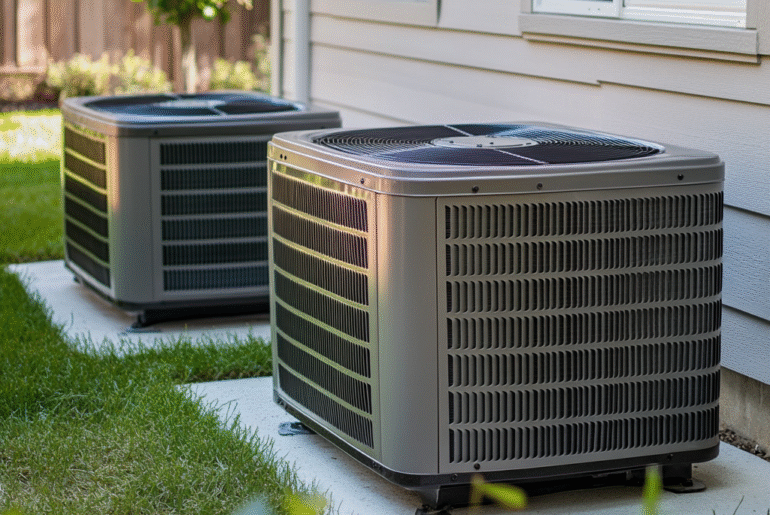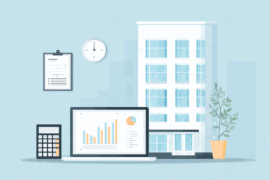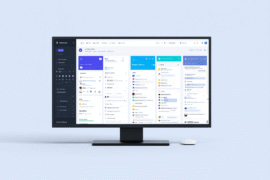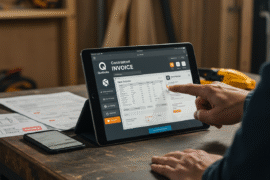This article may contain references to products or services from one or more of our advertisers or partners. We may receive compensation when you click on links to those products or services. Nonetheless, our opinions are our own.
The information presented in this article is accurate to the best of our knowledge at the time of publication. However, information is subject to change, and no guarantees are made about the continued accuracy or completeness of this content after its publication date.
Installing a new HVAC system can enhance home comfort, improve air quality, and reduce energy consumption. Homeowners tend to consider financing options since purchasing and installing a heating, ventilation, and air conditioning system can be quite expensive. Consumers can consider their financing options, including traditional bank loans, energy-efficient rebates, and utility company programs, to address their short-term needs and support their long-term financial health. We’ll go into detail about the best ways to pay for an HVAC system. It gives you a lot of information, useful tips, and plans to help you keep costs down while getting the most comfort and savings.
- Budget Requirements
- Financing Options
- Planning for Ongoing Costs
- Reviewing Loan Agreements
- Consulting Financial Advisors
- Conclusion
- Frequently Asked Questions
- Is supplier financing better than a personal loan?
- How much can rebates and incentives save on a new HVAC system?
- Can a new HVAC system be financed with a 0% APR credit card?
- How long does approval take for energy efficiency financing programs?
- Should ongoing maintenance costs be included in financing?
- Recommended Reads
Budget Requirements
Before researching financing options, it is essential to assess the household budget:
- Review Income and Expenses: Analyze monthly income and mandatory expenses (rent/mortgage, utilities, groceries, insurance) to determine disposable income.
- Set a Budget: Establish a realistic figure for HVAC spending based on savings and willingness to commit to monthly payments.
- Consider Return on Investment: Evaluate whether energy-efficient upgrades could lower utility bills in the long term.
Budget Assessment
| Factor | Description |
|---|---|
| Current Savings | Amount available for an upfront payment |
| Monthly Payment Comfort | Willingness to take on long-term installment plans |
| Potential Energy Savings | Estimated reduction in monthly utility expenses |
Financing Options
Supplier Financing Programs
Many HVAC suppliers offer in-house financing with competitive interest rates and flexible repayment terms. These programs frequently include:
- Flexible Terms: Tailored repayment schedules.
- Low or No Down Payment: Minimal upfront costs.
- Streamlined Applications: Quick approval processes.
Personal Loans from Banks or Credit Unions
Banks and credit unions offer unsecured personal loans to cover the cost of an HVAC system. Key benefits include:
- Fixed Repayment Terms: Predictable monthly payments.
- No Collateral Required: Avoids risking personal assets.
- Improved Cash Flow: Spreads cost over time.
Home Improvement Loans
Specialized home improvement loans are designed for renovation projects and often come with better rates than standard personal loans:
- Lower Interest Rates: Especially for energy-efficient upgrades.
- Extended Repayment Terms: Spread payments over several years.
- Potential Tax Benefits: Interest on certain home improvement loans may be deductible.
Energy Efficiency Incentives and Rebates
Federal, state, and local programs provide tax credits and rebates for energy-efficient HVAC installations. Examples include:
- Federal Tax Credits: For qualifying high-efficiency systems.
- Utility Company Rebates: Discounts or cash-back programs.
- Local Government Incentives: Grants or low-interest loans.
Example Incentives Table
| Incentive Type | Typical Benefit Amount |
|---|---|
| Federal Tax Credit | Up to 30% of equipment cost |
| Utility Rebate | $200-$1,200 per system |
| Local Incentive | Grants up to $5,000 |
0% APR Credit Card Offers
Consumers with strong credit can use credit cards with 0% APR introductory periods to finance HVAC purchases. Important considerations include:
- Introductory Period Length: 6–18 months is common.
- Post-Promo Rates: Can rise sharply after the initial period.
- Potential Fees: Balance transfer fees or late payment penalties.
Contractor Payment Plans
Some HVAC contractors offer in-house payment plans, allowing homeowners to pay over time with minimal or no interest. Points to clarify with contractors include:
- Repayment Duration: Length of the plan.
- Monthly Payment Amount: Fits within household budget.
- Upfront Costs: Deposit requirements or setup fees.
- Interest Charges: Some plans offer 0% financing.
Utility Company Energy Savings Loans
Certain utility companies offer financing for energy-efficient upgrades, with benefits such as:
- Low Interest Rates: Competitive compared to traditional loans.
- No Upfront Costs: Amount added to utility bills.
- Easier Approval: Streamlined application processes.
Peer-to-Peer Lending Platforms
Platforms like LendingClub or Prosper connect borrowers with individual investors, offering:
- Competitive Rates: Often lower than traditional loans.
- Flexible Terms: Varied loan amounts and payment plans.
- Faster Approvals: Streamlined online processes.
Voted "Best Overall Budgeting App" by Forbes and WSJ
Monarch Money helps you budget, track spending, set goals, and plan your financial future—all in one app.
Get 50% OFF your first year with code MONARCHVIP
Planning for Ongoing Costs
A new HVAC system incurs ongoing costs beyond installation:
- Annual Maintenance: Regular service prevents breakdowns.
- Energy Efficiency Savings: High-efficiency models lower monthly bills.
- Warranty Coverage: Comprehensive warranties reduce unexpected repair costs.
Reviewing Loan Agreements
Before signing any loan, consumers should carefully review:
- Interest Rates: Fixed or variable.
- Payment Schedules: Due dates and frequency.
- Fees: Origination, prepayment, or administrative fees.
- Terms and Conditions: Avoid confusing jargon that can obscure important details.
Consulting Financial Advisors
Professional financial advisors or energy financing specialists can provide personalized guidance on:
- Budget Planning: Determine a feasible investment amount.
- Financing Programs: Explore government incentives and rebates.
- Tailored Recommendations: Identify HVAC systems offering the best return on investment.
Conclusion
When you want to buy a new HVAC system, you should think about your budget, the different ways you can pay for it, and how much money you might save in the long run by making upgrades that use less energy. Homeowners can make their homes as comfortable as possible without spending a lot of money by looking into incentives, comparing loan terms, and planning for maintenance costs. You can save the most money by using supplier financing, looking into personal and home improvement loans, or taking advantage of utility programs and rebates. These options let you pay for things over time. With careful planning and a full review of each option, it is possible to upgrade a home’s heating and cooling system in a way that is both smooth and good for the budget.
Frequently Asked Questions
Is supplier financing better than a personal loan?
Supplier financing can offer competitive rates and faster approvals, but personal loans may provide greater flexibility and better rates for those with excellent credit.
How much can rebates and incentives save on a new HVAC system?
Depending on location and system efficiency, combined rebates and incentives can reduce costs by hundreds or even thousands of dollars.
Can a new HVAC system be financed with a 0% APR credit card?
Yes, many homeowners use 0% APR introductory offers for short-term financing. It is essential to pay the balance before the promotional period ends to avoid high interest rates.
How long does approval take for energy efficiency financing programs?
Approval times vary, but utility company programs often have faster processing due to streamlined applications.
Should ongoing maintenance costs be included in financing?
While not always included in the loan, budgeting for annual maintenance ensures the system runs efficiently and reduces unexpected expenses.

Reviewed and edited by Albert Fang.
See a typo or want to suggest an edit/revision to the content? Use the contact us form to provide feedback.
At FangWallet, we value editorial integrity and open collaboration in curating quality content for readers to enjoy. Much appreciated for the assist.
Did you like our article and find it insightful? We encourage sharing the article link with family and friends to benefit as well - better yet, sharing on social media. Thank you for the support! 🍉
Article Title: Best Way to Finance a New HVAC System
https://fangwallet.com/2025/07/07/best-way-to-finance-a-new-hvac-system/The FangWallet Promise
FangWallet is an editorially independent resource - founded on breaking down challenging financial concepts for anyone to understand since 2014. While we adhere to editorial integrity, note that this post may contain references to products from our partners.
The FangWallet promise is always to have your best interest in mind and be transparent and honest about the financial picture.
Become an Insider

Subscribe to get a free daily budget planner printable to help get your money on track!
Make passive money the right way. No spam.
Editorial Disclaimer: The editorial content on this page is not provided by any of the companies mentioned. The opinions expressed here are the author's alone.
The content of this website is for informational purposes only and does not represent investment advice, or an offer or solicitation to buy or sell any security, investment, or product. Investors are encouraged to do their own due diligence, and, if necessary, consult professional advising before making any investment decisions. Investing involves a high degree of risk, and financial losses may occur including the potential loss of principal.
Source Citation References:
+ Inspo
There are no additional citations or references to note for this article at this time.












































